With the increase in population during the 19th century, the parish of Weston acquired land south of Cedric Road which was incorporated into Locksbrook Cemetery. It was consecrated on Thu 27 Sep 1877 by the Bishop of Bath and Wells and administered by a burial board with sections for Anglicans and nonconformists. According to the press report on the consecration, the burial board “have been able to effect an arrangement with the representatives of the parishes of Walcot and St. Saviour’s, for the use of the present chapel for all interments from Weston, thus saving to the latter place the expense of providing an extra building of the kind. One seventh of the entire ground is appropriated for the burial of Dissenters, and another strip is set apart for St. Saviour’s, in consideration of some portion of the land being used in the construction of new roads.”
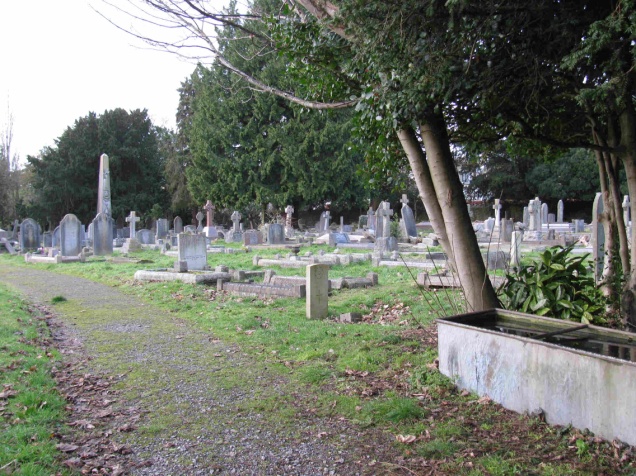
Central Section
|
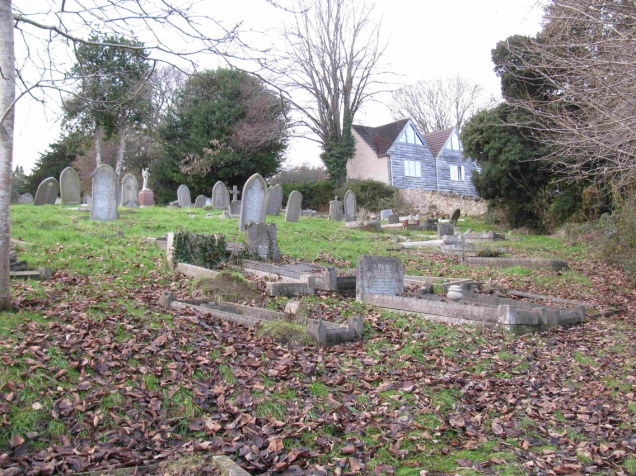
Eastern Section
|
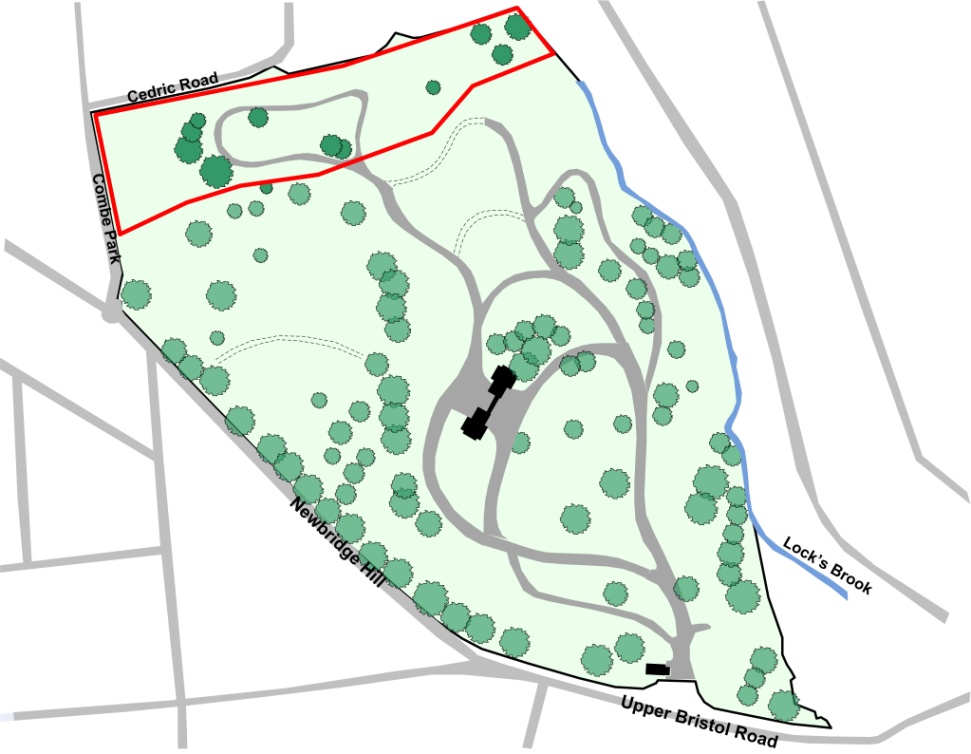
Location of the Weston section of Locksbrook cemetery
|
Graves are identified by a letter and a number. The letter simply designates a block of about 6 rows, starting at A at the southern side and increasing to H at the northern side. The numbers of the graves are unique. However, while the numbering is well-behaved in the western and central parts, it is more confused in the eastern part. The southern rows constitute the nonconformist section.
Of the 5,832 burials, 1,711 names appear on memorials.
The central part is level. The land drops down at the western end into an area with relatively few memorials. At the eastern end the land slopes down from the central part and then there is an abrupt drop down to the Lock’s Brook, again with few memorials.
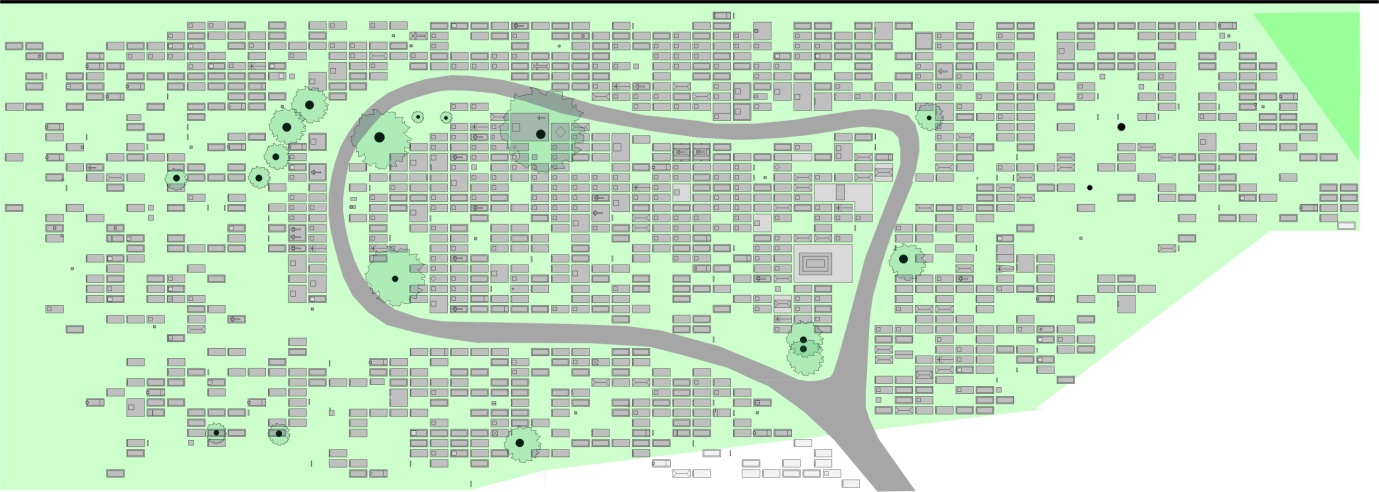
Arrangement of surviving memorials
|
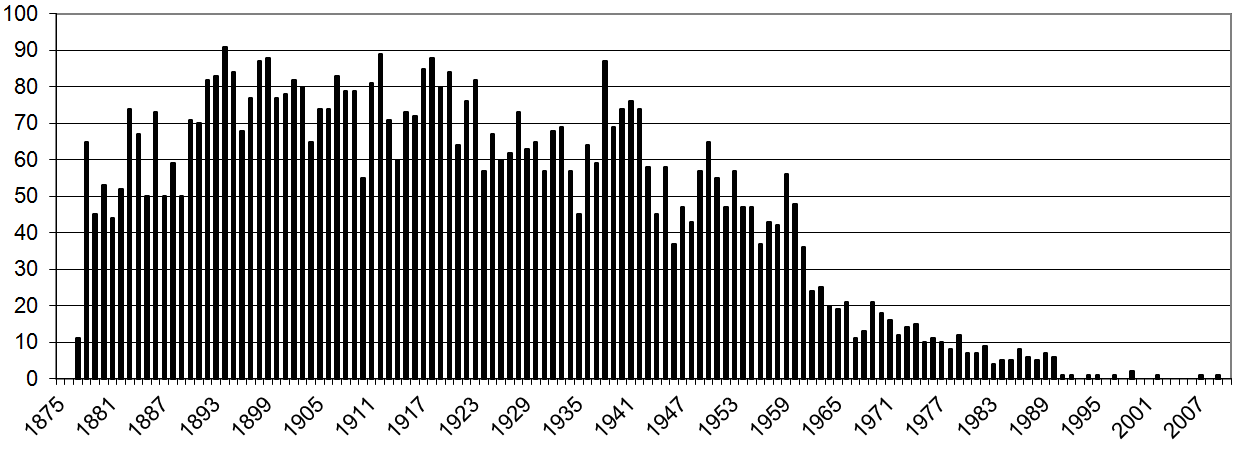
Number of burials per year
|
The number of burials after 1937, when Haycombe cemetery opened, is more than 1,700. When the cemetery gates are open it is possible to drive through to the Weston section. A water trough can be found under the trees where the drive splits into two.
Documentation
Locksbrook Cemetery: Weston Section – Burial Register Entries, P J Bendall. Draft 2012 [Bath Record Office]. This includes a name index and a partial location index. Draft versions of maps are available at Bath Record Office.
Limitations
From 2023 the burial registers for this part of Locksbrook Cemetery are held by Bath Record Office. In Jan 2024 the original records based on the index are being enhanced with the additional information from the registers. This includes plot numbers, abodes and places of death.